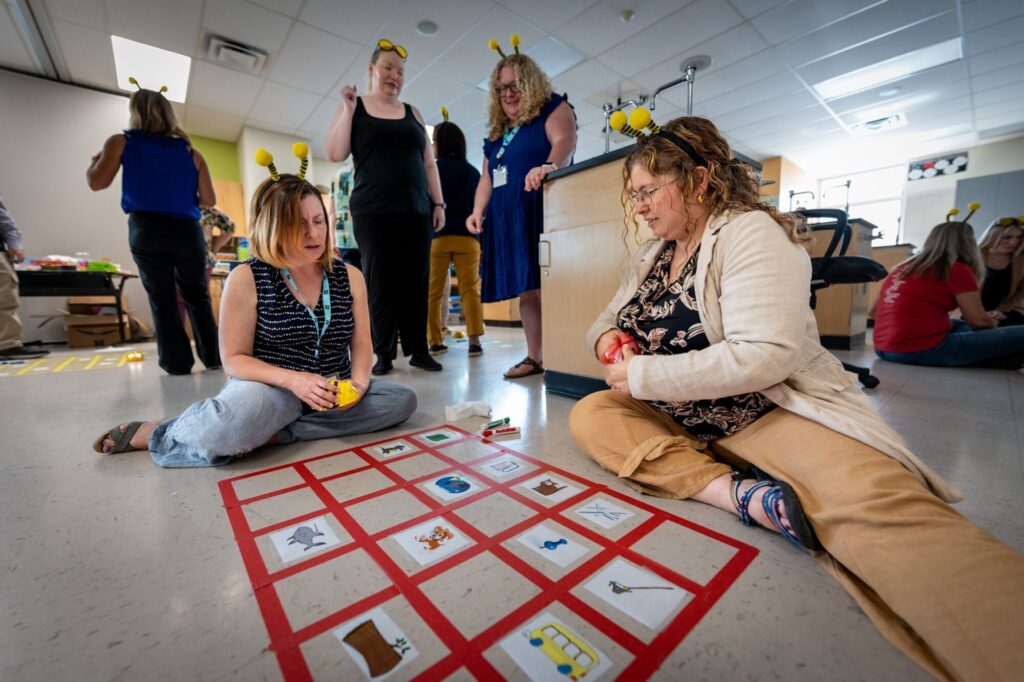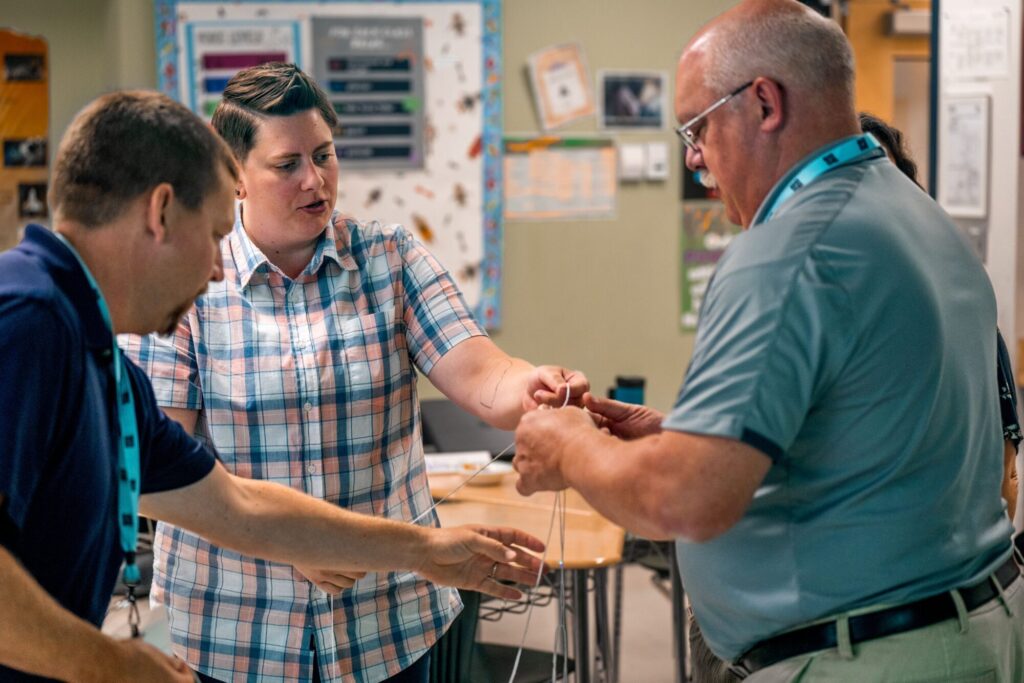Regardless of the grade they teach, Ohio educators can find the resources they need to motivate students, align with pertinent standards, and foster transformative skills through computer science.
Priority applications close May 1 for Ohio teachers to embark on the Computer Science Discoveries, Computer Science Principles, and Computer Science A courses. For those teaching at the elementary level, the Ohio STEM Learning Network’s Computer Science K-5 Program is also accepting priority applications.
We’d like to share a letter from Elizabeth Shirk at Springmill STEM Elementary School. She penned this letter to us in late Fall 2023, during her time in the cohort. Elizabeth has since completed the Computer Science K-5 Program:
I have to admit, when I accepted a position to work with younger students and computers I had a lot of reservations about what that might look like. I worried about how I would be able to help everyone all at once. How could I make lesson plans for a span of so many grade levels and still have time to sleep at night? I have been a teacher for 16 years and nearly all of those I have used technology to be able to deliver my instruction to my students. Using technology was one thing, but teaching it to students as young as 5 was a completely different situation. Computers and technology are so much a part of our daily lives, I think we forget just how dependent we are on them.
I work at Springmill STEM Elementary School in Mansfield, Ohio. We are an urban district with a little over 200 students in our building. Over the summer, I had the chance to become a member of the Code.org cohort and it has absolutely made a difference in my teaching.
Going into the program, I wasn’t really sure that I even belonged. I worried that my colleagues would be way more advanced or that I would be confused and lost. Luckily for me, the opposite happened. We all come from different backgrounds and parts of the state. In my opinion, this is what makes the cohort so meaningful. Some of us come from districts who have all of the latest 3D printers and bots, while others use grant writing to try their luck at being able to have just a few items to use in their classrooms.
Code.org has really done an exemplary job of making coding accessible to anyone. I use it with my youngest engineers in Kindergarten, all the way through 6th grade. It really is so easy to use. You don’t have to do prep for hours. Really, everything you need has already been done for you. Just log in and get started. The best part of my day is seeing a student completely in awe of what they were able to accomplish using the technology.
I have met so many wonderful colleagues I am proud to now call friends. We all bring new ideas and a fresh pair of eyes when we meet. We trade our struggles for solutions and share the belief that computer science is for every student we serve.
Elizabeth Shirk
Springmill STEM Elementary School
Tailored options for every grade level
Priority applications close May 1, 2024

